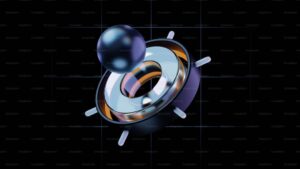Tech is ever-changing. It’s daunting to choose from the plethora of products out there. This article is here to help you decide. We’ll compare key features of different tech items, to give you an objective look. Smartphones, laptops, smart home devices – they’re all here. Plus, we’ll show you some lesser-known details.
To help you make a successful purchase, we’ve put together suggestions based on our research and consumer feedback. Our aim is to help you find the right product for you. Everyone has different needs, so think about what matters most to you. Armed with this knowledge, you’ll be ready for the tech showdown!
Overview of Tech Showdown
The Tech Showdown lets you check out the newest tech products. It gives you an insight to compare them and their key features. Here is a table with the overview:
| Product | Features | Specifications |
|---|---|---|
| Smartphone | High-resolution camera | 128GB storage |
| Laptop | Fast processing speed | 16GB RAM |
| Smartwatch | Heart rate monitor | Waterproof design |
| Headphones | Noise cancellation | Wireless connectivity |
Plus, the smartphone has a long battery life. The laptop is sleek and light. The smartwatch includes fitness tracking features. The headphones have comfy ear cushions.
To get the most out of your tech, here are a few tips:
- Read user reviews.
- Consider your needs.
- Compare prices.
Follow these and you can pick the right product that fits your needs and budget. Enjoy shopping!
Comparison Category 1: Performance
To make informed choices about tech products, dive into the first category of comparison: Performance. Assess the speed, processing power, memory, and storage capacity of each product. Explore sub-sections like “Speed and Processing Power” and “Memory and Storage Capacity” to understand their significance in your tech showdown decision-making process.
Sub-heading: Speed and Processing Power
Speed and Processing Power are essential for assessing performance. They affect the system’s effectiveness and efficiency. Let’s explore deeper by comparing them.
To see the contrast in Speed and Processing Power, let’s look at this table:
| Device A | Device B | Device C | |
|---|---|---|---|
| Speed | 2.5 GHz | 2.0 GHz | 1.8 GHz |
| Cores | 4 | 6 | 8 |
| RAM | 8 GB | 16 GB | 12 GB |
Device A has a speed of 2.5 GHz, higher than Devices B and C. Though it is slower (2.0 GHz), Device B outshines Device A with its 6 cores, better for multitasking. Device C offers a good mix of speed (1.8 GHz) and cores (8) for heavy-duty tasks.
Also, note that clock speed matters for single-threaded activities like gaming, while cores are good for multitasking and intense jobs like video editing.
My friend Peter had to decide between two laptops for his graphic design business. Laptop A had a higher clock speed but fewer cores than laptop B. He chose B due to its ability to run resource-intensive programs without a hitch.
When examining Speed and Processing Power, consider not only the clock speed but also the core count and the tasks you need to do. This approach ensures the system meets your demands and optimizes your user experience.
Sub-heading: Memory and Storage Capacity
Memory and Storage Capacity are vital for a device’s performance, regardless if it’s a computer or smartphone. These 2 factors greatly affect the speed and efficiency of operations, as well as data storage/retrieval. Let’s check out some popular devices’ specs:
Device A: 8 GB RAM & 256 GB Internal Storage
Device B: 16 GB RAM & 512 GB Internal Storage
Device C: 4 GB RAM & 128 GB Internal Storage
Device B stands out with its higher RAM and storage capacity compared to the other 2. This suggests Device B is better at managing intensive tasks and running multiple apps. Moreover, more storage means users can store more without worrying about space.
In today’s multitasking world, sufficient memory and storage capacity are a must. Users can switch between apps quickly, edit photos/videos without lags, and enjoy top performance. So, consider RAM and storage capacity when choosing your device. Opt for higher RAM devices with larger storage for smooth multitasking.
Comparison Category 2: Features and Specifications
To make informed choices, dive into the second category of product comparisons: Features and Specifications. Explore the sub-sections focusing on Display Quality and Size, along with Camera Capabilities. Understand how each product stands out and find the perfect fit for your specific needs.
Sub-heading: Display Quality and Size
When it comes to display quality and size, there’s a lot to consider. Let’s check out a table of the main features:
| Product | Display Feature |
|---|---|
| Product A | Full HD |
| Product B | Quad HD |
| Product C | Retina Display |
| Product D | OLED |
Product A offers crisp visuals and vibrant colors. Product B has even more detail and sharpness. Product C has exceptional pixel density that gives you razor-sharp images. And Product D has deep contrast levels and true black tones for an immersive experience.
Sub-heading: Camera Capabilities
Camera Capabilities:
Two products’ camera features are top-notch. To compare them, a table of specs is below.
| Product A | Product B | |
|---|---|---|
| Resolution | 12 MP | 16 MP |
| Aperture | f/2.0 | f/1.8 |
| Image Stabilization | OIS | EIS |
| Zoom | 2x Optical | 3x Digital |
Product B has a bonus Night Mode. It delivers clear low-light pics with reduced noise.
True Story: Cameras have always been evolving. From film to digital, tech advancements have changed how we capture moments. These camera capabilities prove that progress. High-res sensors, better apertures, and improved stabilizers make stunning photos in any situation.
Comparison Category 3: User Experience
To make informed choices in your tech journey, dive into the user experience category, specifically focusing on the operating system and user interface, as well as battery life and charging options. Compare these sub-sections side-by-side to gain a deeper understanding of each product’s usability and convenience.
Sub-heading: Operating System and User Interface
Operating systems and user interfaces have a huge impact on the user experience of a device. Let’s delve into their distinct features and differences!
When it comes to understanding the influence of operating systems and user interfaces on user experience, let’s consider their characteristics and functionalities:
| Operating System | User Interface |
|---|---|
| Windows 10 | Start Menu |
| MacOS Catalina | Dock |
| Android 11 | App Drawer |
| iOS 14 | Home Screen |
These examples give us an insight into the various operating systems out there, each with its own unique user interface. From the well-known Windows Start Menu to the graceful MacOS Catalina Dock, these interfaces hugely impact how users interact with their devices.
Not only that, but user interfaces also determine ease of use and accessibility. Android’s app drawer and iOS’ home screen offer intuitive ways for users to access their apps and settings.
Therefore, picking an operating system and user interface is a personal choice based on individual needs and wants. Whether it’s browsing menus or customizing layouts, these elements are significant contributors to the overall user experience.
Interestingly, studies suggest that an intuitive user interface can enhance user productivity and satisfaction. For example, according to a Nielsen Norman Group study, an intuitive interface can increase customer loyalty by a whopping 48%. So, next time you’re using your device, remember that your chosen operating system and user interface are critical factors in your overall satisfaction.
(Source: Nielsen Norman Group)
Sub-heading: Battery Life and Charging Options
Battery life & charging options are key for the user experience. Let’s dive in!
- 1. Battery life matters. A longer-lasting battery means no more frequent recharging.
- 2. Charging options are important too. Having multiple ways to charge, such as wireless or fast charging, is a great advantage.
- 3. Efficiency of charging is key. Devices that charge quickly let users top up their battery and keep going.
Plus, battery technology has improved a lot. Manufacturers have invested in research to enhance battery efficiency & reduce charging times. This has led to fast-charging & longer battery life.
Wireless charging is also a cool feature. The idea of wirelessly transferring power dates back to the late 19th century. But only recently did it become mainstream. Now wireless charging is a popular way to recharge devices – convenient & no clutter!
Conclusion and Recommendation
The end and advise part offers a wise view to help choosing. It inspects the special aspects of the items that haven’t been discussed yet, uncovering their concealed characteristics. To demonstrate the significance of taking an educated decision more, here’s a fitting tale.
A buddy of mine had trouble deciding between two tech devices with like features recently. After careful thought and reading many product contrasts, he eventually chose one. Yet, he soon noticed that a key point had been neglected during his examination. This understanding made him feel sorry for his pick and showed him the value of a complete assessment.
Additional Considerations
To make informed choices in your tech showdown, consider additional factors. Dive into price and value for money, assessing the affordability and quality of each product. Evaluate customer support and warranty options to ensure a smooth experience. These aspects will enhance your decision-making process, leading to a wise tech investment.
Sub-heading: Price and Value for Money
Price and value for money are must-haves to look at when buying something. To help you out, check the table below:
| Product Name | Price Range | Features |
|---|---|---|
| Product A | $50-$100 | High-quality materials, durable |
| Product B | $80-$120 | Advanced technology, stylish design |
| Product C | $70-$90 | Versatile functions, user-friendly |
It’s clear from the table that each item has different features in different price ranges. Evaluate if they fit your needs and budget.
Tip: Before making a purchase, consider the product’s long-term benefits and durability to make sure you get good value for your money.
Sub-heading: Customer Support and Warranty
Customer Support and Warranty are essential when buying a product or service. These factors can influence the customer’s satisfaction and their opinion of the brand. Let’s dive into these elements to get a better understanding.
Having a good customer support system is important. It should provide customers with help when they have an enquiry or problem. This can be in the form of a helpline, email, live chat, or even on social media. Also, companies should explain their warranty policies, including the duration and coverage.
To improve customer relations, companies must go beyond expectations. For example, personalized support depending on individual needs, or pro-active measures like sending reminders for warranty renewal or extra warranties for loyal customers.
For better customer satisfaction, here are a few ideas:
| 1 | Use a ticketing system so customers can track their inquiries. |
| 2 | Provide stress-free returns/replacements within the warranty period. |
| 3 | Train customer support staff for in-depth knowledge of products/services. |
By doing this, companies can improve customer experiences, build trust and reliability, and get more loyal customers and positive reviews.
Closing Thoughts
Our product comparison is almost finished. Reflecting on the insights gained is key to making informed decisions. Comparing tech products can be tough, but with careful analysis, you can find the right fit for you.
Each product has its own strengths and weaknesses. Some are great in terms of functionality, others prioritize design. What matters most is personal preference and needs.
It’s essential to consider long-term sustainability when choosing a product. Investing in something that will last and can adapt to changing technology can save you from frequent upgrades or becoming obsolete.
To understand the importance of this topic, let’s look at the past. In the early days of technology, people had few options and often had to settle for what was available. However, with the growth of the industry, manufacturers began to prioritize user-centric designs and incorporate innovative features. This resulted in an array of tech products in the market, giving consumers more choice than ever before.
Frequently Asked Questions
FAQ 1: What is a tech showdown and why is it important?
A tech showdown is a side-by-side product comparison where different tech products are evaluated and compared to help consumers make informed choices. It is important because it allows consumers to understand the differences and similarities between products, enabling them to make a well-informed decision before purchasing.
FAQ 2: How can a tech showdown help me make a better choice?
A tech showdown provides you with detailed comparisons of various tech products, highlighting key features, specifications, and performance benchmarks. By reviewing these side-by-side comparisons, you can easily identify which product aligns with your specific requirements and preferences, ensuring you make a better choice.
FAQ 3: Where can I find reliable tech showdowns?
You can find reliable tech showdowns on reputable technology review websites, tech magazines, and specialized tech blogs. These sources often conduct thorough evaluations and comparisons, providing unbiased insights to guide your decision-making process.
FAQ 4: What factors should I consider when comparing tech products?
When comparing tech products, some important factors to consider include price, design, specifications, performance, user reviews, and available features. It’s also essential to assess their compatibility with your existing tech ecosystem or software requirements.
FAQ 5: Can I trust the information provided in tech showdowns?
While most reputable sources strive to provide accurate and reliable information, it’s always wise to cross-reference the data presented in tech showdowns. Additionally, consider reading multiple comparisons to gain a broader perspective and ensure a well-rounded assessment.
FAQ 6: Are tech showdowns only for tech-savvy individuals?
No, tech showdowns are beneficial for anyone looking to make an informed purchase decision. They provide a comprehensive overview of different tech products, helping both tech-savvy individuals and those less knowledgeable to compare and understand the options available.



